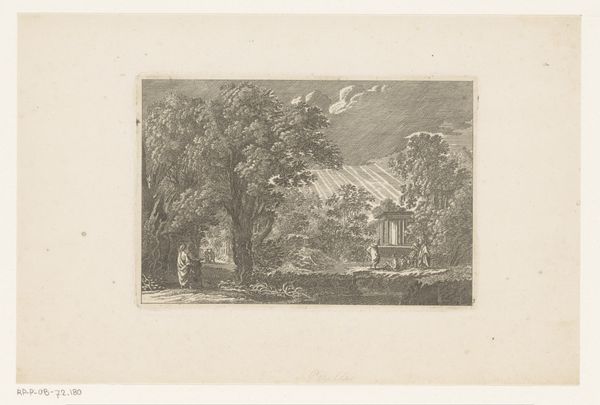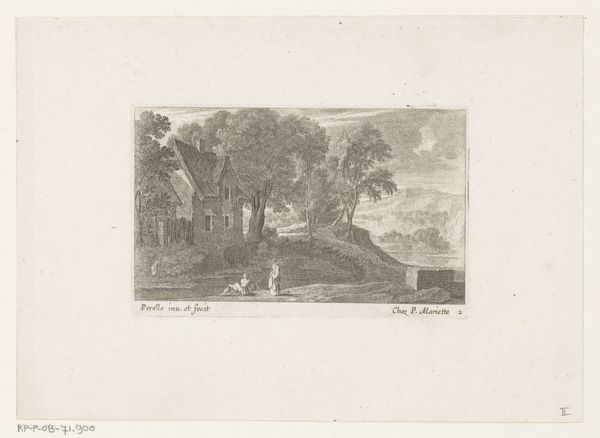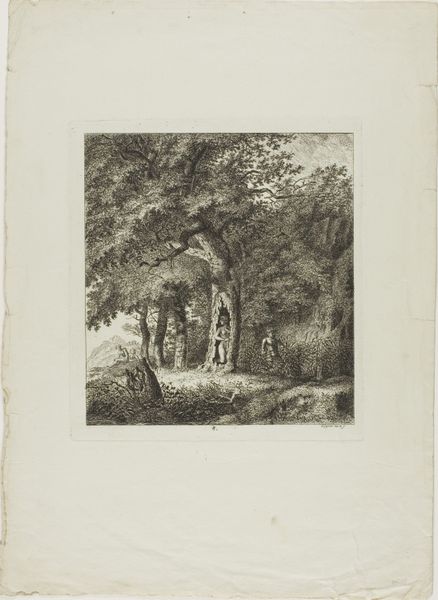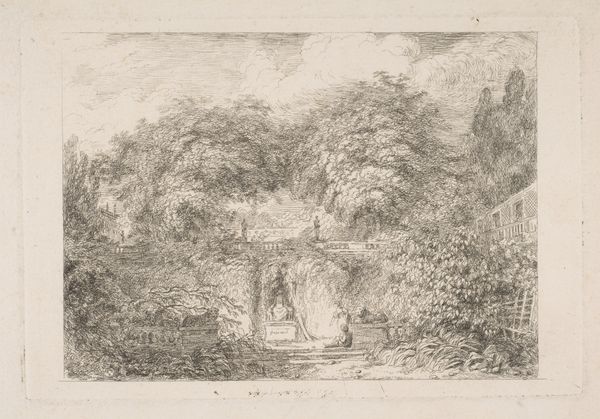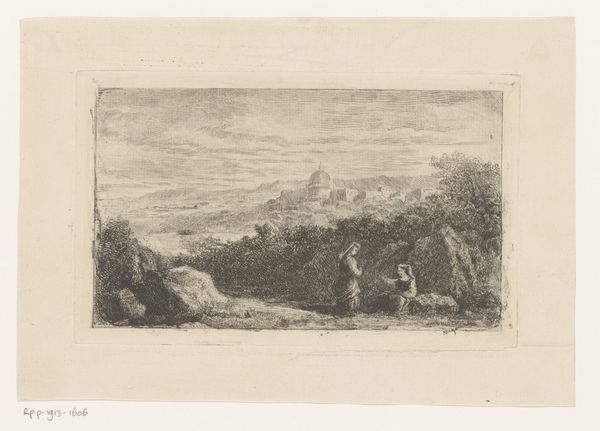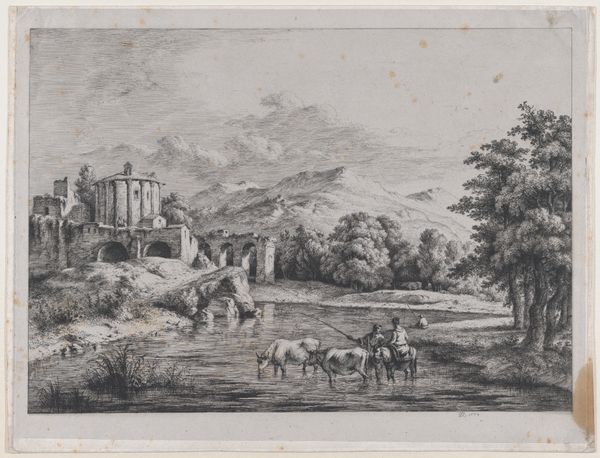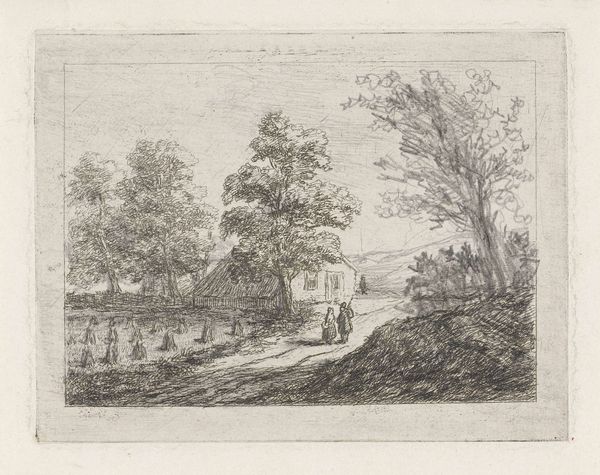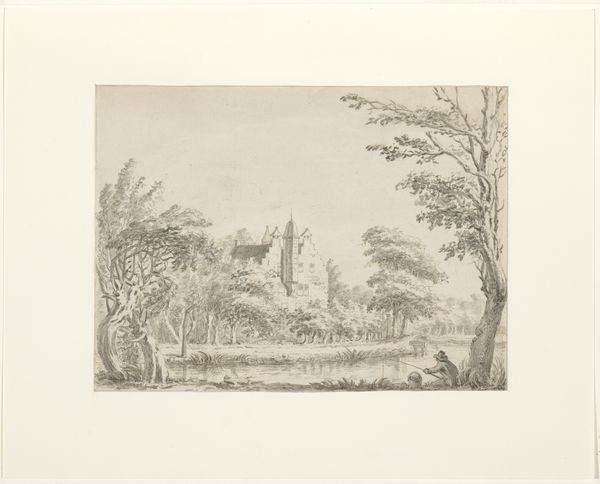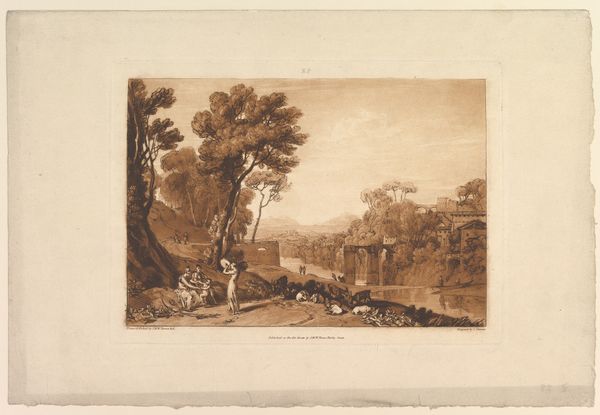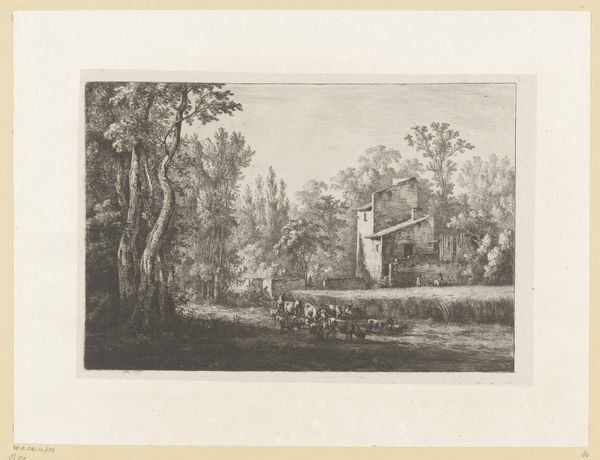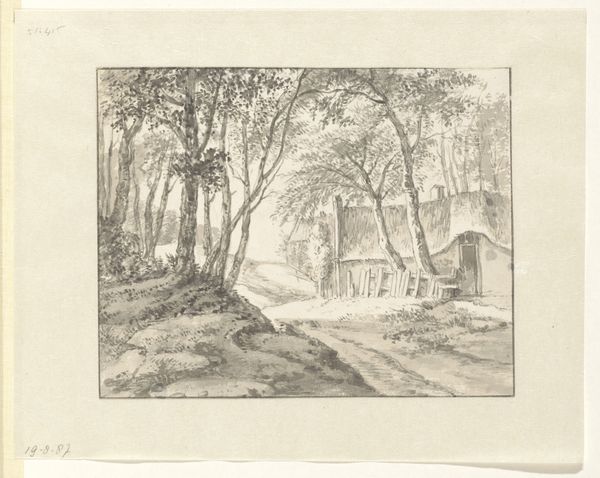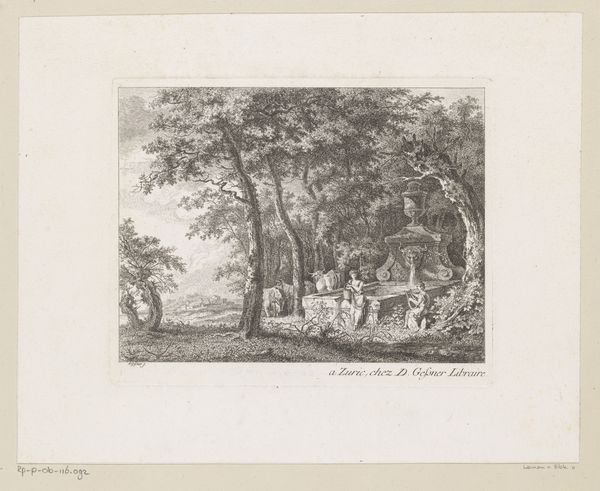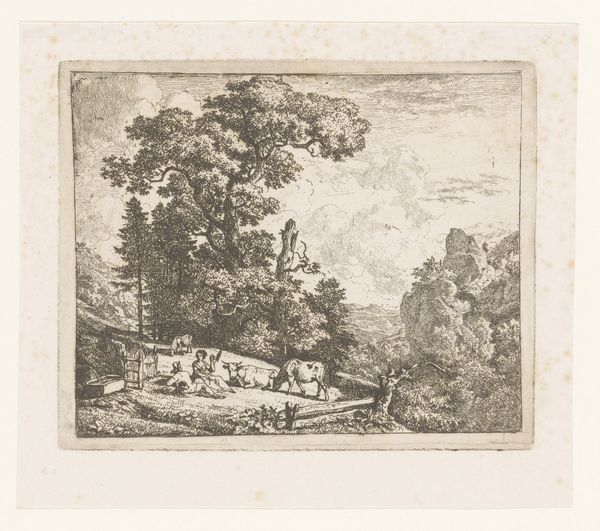
Wooded Landscape with a Peasant Reading a Tombstone, Rustic Lovers and a Ruined Church 1797
0:00
0:00
drawing, print, etching
#
drawing
#
narrative-art
# print
#
etching
#
landscape
#
romanticism
#
genre-painting
Dimensions: Plate containing image: 11 11/16 x 14 3/4 in. (29.7 x 37.4 cm) Sheet: 15 13/16 x 19 5/16 in. (40.2 x 49.1 cm)
Copyright: Public Domain
Curator: So this etching, "Wooded Landscape with a Peasant Reading a Tombstone, Rustic Lovers and a Ruined Church," dates back to 1797 and comes to us from the hand of Thomas Gainsborough. Editor: It’s got a definite somber tone. All that subtle cross-hatching really conveys the feeling of a melancholic scene. It is, however, gorgeous, really lovely detail and a palpable mood. Curator: Gainsborough, known primarily as a painter, actually produced a significant number of prints, particularly towards the end of his career. He seemed fascinated by the etching process, which allowed for a certain level of spontaneity. Looking at it through that lense, I love how Gainsborough has leveraged etching’s replicability. Editor: Definitely spontaneous! See how he’s almost scrawling with the etching needle? Look at that ruined church – the architectural decay becomes symbolic of societal shifts and the transient nature of structures, which is really something when one reflects upon what a printing plate entails and evokes. Curator: And that's where the tension of romanticism comes in, it almost feels elegiac. You know, that peasant reading the tombstone. What do you think they're making of it all? Gainsborough, so attuned to the aristocratic gaze, momentarily focuses on the worker here. Editor: It reminds me how class structures inform access to materials and methods. Etching, traditionally the terrain of fine art, democratized somewhat through print culture... Who has the access to see art, create it, write about it, and preserve its legacy? Curator: That’s a brilliant way to put it. Thinking of printmaking and the accessibility and production... Do you think there is a little radical intent behind the nature, rustic sensibility, of that artist's production, here? Or should it be about production and labor in its context of 18th century consumption? Editor: That, I believe, depends on who you ask! But whether Gainsborough knew or planned it is up for debate. And to this day his art encourages discussions of art and the ways of creating that! Curator: He certainly seemed to appreciate the medium. He talked about the pleasure of "scribbling" on the copper plate. Editor: Exactly, he engaged with it deeply, both in production and distribution, whether or not he fully intended every message to come through, it is clearly encoded in every little cross-hatching that makes up this scene. It's all material!
Comments
No comments
Be the first to comment and join the conversation on the ultimate creative platform.
